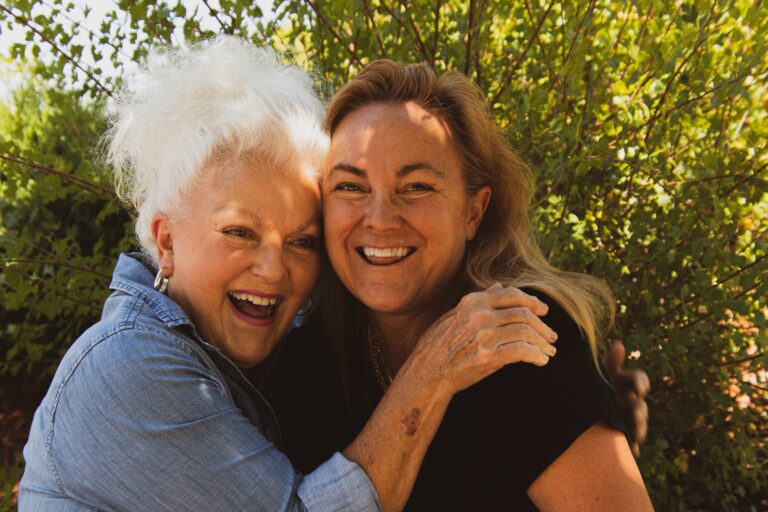Undergoing hip replacement is a transformative experience, promising improved mobility and reduced pain. But, the journey of recovery demands forethought and assistance. Bringing in an in-home caregiver can substantially ease this process. Here’s why each preparation and the caregiver’s role matters:
- Home Safety Measures
- Eliminate Tripping Hazards: Recovery means limited mobility initially. Clutter can magnify the risk of falls, leading to setbacks or further injury. A caregiver actively ensures pathways remain clear, reducing the risk and ensuring safety.
- Install Handrails: Not all homes are equipped for post-surgery mobility challenges. Caregivers can identify areas where additional support, like handrails, are beneficial, assisting in their proper use and ensuring stability during movement.
- Adjust Furniture: Post-surgery, even familiar spaces can become daunting. By rearranging furniture or ensuring secure seating, caregivers not only make the environment accessible but also promote confidence in the patient’s daily activities.
- Bathroom Adjustments: The bathroom can be a high-risk area. By aiding in using tools like raised toilet seats or shower benches, caregivers reduce the chances of slips and provide necessary support during vulnerable moments.
- Stay Active, But Be Mindful
- Guided Movement: Movement is crucial for recovery, but overexertion can be detrimental. Caregivers can gauge and guide the patient’s activity levels, offering physical support and ensuring that the patient doesn’t push too hard too soon.
- Physical Therapy: Consistency in therapy exercises is key to successful recovery. A caregiver ensures exercises are done regularly and correctly, maximizing the benefits and reducing the risk of injury.
- Important Physical Precautions
- Avoid Crossing Legs: Seemingly harmless habits can jeopardize the new joint. A caregiver’s reminders about not crossing legs or excessive bending help inculcate safe post-surgery habits, minimizing risks like dislocation.
- Sleep Positioning: Proper rest is invaluable for healing. With a caregiver’s assistance in adjusting pillows and ensuring safe sleep postures, the patient can enjoy restorative sleep without compromising their recovery.
- Daily Activities with Care
- Dressing: Simple tasks can become Herculean challenges post-surgery. With a caregiver’s assistance, patients can dress without straining their new joint, ensuring they remain independent and comfortable.
- Sitting & Transfers: The act of sitting and standing post-surgery requires caution. A caregiver provides the necessary support, making these transfers not just safer but also less daunting for the patient.
- Mental Health Matters
- Stay Connected: Post-surgery recovery can be isolating. Beyond physical assistance, caregivers offer companionship. Their presence alleviates feelings of loneliness, ensuring emotional well-being alongside physical recovery.
- Ask for Help: A caregiver’s presence eliminates the hesitance many feel in asking for help. Whether it’s a physical need or an emotional concern, patients are encouraged to communicate openly, fostering a nurturing recovery environment.
- Plan Ahead
- Medication Management: Post-operative medications can be complex. Caregivers ensure timely and correct dosage, preventing potential complications and ensuring the patient’s health is always prioritized.
- Regular Monitoring: With an in-home caregiver, there’s consistent monitoring. Any potential issues or complications can be swiftly addressed, reducing risks and ensuring optimal recovery.
Post Hip-Replacement: Going Home Alone vs. Needing an In-Home Caregiver
You Might Be Okay Going Home Alone If:
- Mobility: You can move around with minor assistance or the use of mobility aids like walkers without feeling unstable or at risk of falling.
- Daily Activities: You’re confident in performing daily tasks, such as dressing, basic cooking, and toileting, without significant strain or discomfort.
- Medication Management: You’re able to keep track of and administer your post-operative medications without confusion.
- Exercise Regimen: You understand and can perform your post-surgery exercises without oversight.
- Emotional Well-being: You have a strong support system nearby (like friends or family) and don’t feel isolated or excessively anxious about your recovery.
- Emergency Preparedness: You have a plan in place for emergencies, like who to call or how to seek assistance if needed.
Consider an In-Home Caregiver If:
- Limited Mobility: You find it challenging to move around your home, even with the aid of mobility devices, and feel at risk of falling.
- Difficulty with Daily Activities: Tasks like bathing, dressing, or preparing meals seem daunting or risky for your current physical state.
- Complex Medication Regimen: You have multiple medications with varying schedules and doses, and are concerned about managing them correctly.
- Physical Therapy Needs: You need assistance or reminders to do your post-surgery exercises, or are unsure about doing them correctly.
- Emotional Support: You feel isolated or believe that having someone around would benefit your emotional well-being during recovery.
- Safety Concerns: You have concerns about being alone, especially during the night, or fear potential emergencies where you’d need immediate assistance.
- Household Management: You foresee challenges in managing household chores, errands, or maintaining a clean environment conducive to recovery.
Every individual’s recovery journey is unique. While some might find it feasible to recover independently, others benefit immensely from the support of an in-home caregiver. This checklist provides a starting point, but always consult with your healthcare professional and trust your instincts when making the final decision. Remember, the primary goal is a safe, smooth, and stress-free recovery. The recovery process post hip-replacement, while promising, is fraught with challenges. Every preparation, especially the inclusion of an in-home caregiver, is about turning those challenges into manageable tasks, ensuring not just physical recovery but also emotional well-being. It’s about creating a space where the patient doesn’t just heal, but thrives.
Some Essential Items for Hip Replacement Recovery at Home
- Mobility Aids:
- Walker or Crutches: Vital in the initial weeks post-surgery to assist with mobility.
- Cane: Useful for later stages of recovery once you’re more mobile.
- Safety Additions:
- Handrails: Installing these in hallways and bathrooms can prevent falls.
- Non-slip Bath Mats: These reduce the risk of slipping in the bathroom.
- Shower Bench or Chair: Allows you to sit while showering, reducing fatigue and risk of falls.
- Raised Toilet Seat: Makes it easier and safer to use the toilet without bending too much.
- Comfort Enhancements:
- Firm Pillow or Wedge: Useful for elevating the leg and for placing between the legs while sleeping.
- Recliner Chair: Provides a comfortable sitting position that doesn’t strain the hip.
- Ice Packs: Help in reducing inflammation and providing pain relief.
- Over-bed Table: Helps in keeping essential items within reach without having to move much.
- Dressing Aids:
- Dressing Stick: Helps in putting on pants, shirts, and underwear without bending.
- Sock Aid: Allows you to put on socks without bending.
- Long-handled Shoehorn: Helps put on shoes without much bending.
- Reacher or Grabber Tool: Useful to pick up items without bending over.
- Exercise and Therapy Tools:
- Ankle Weights: Can be used during prescribed exercises to strengthen muscles.
- Resistance Bands: Useful for various physiotherapy exercises.
- Stretching Strap: Helps in maintaining flexibility during the recovery phase.
- Medication and Health Monitoring:
- Pill Organizer: To keep track of daily medications.
- Thermometer: To monitor for signs of infections, especially in the initial days post-surgery.
- Blood Pressure Monitor: Useful if you’re on medications that can affect blood pressure.
- Convenience Items:
- Bedside Commode: If moving to the bathroom is too challenging initially.
- Remote Control Caddy: Keeps essential items like TV remotes, phones, and glasses within easy reach.
- Tongs or Extended Clamps: Helpful for tasks like turning off lights without getting up.
When setting up your home for post-surgery recovery, the key is convenience, safety, and comfort. These items aim to minimize movement that could strain the new joint while maximizing self-sufficiency and ensuring a smoother healing process. Always consult with your healthcare provider or physical therapist about any specific items they might recommend for your personal recovery journey.


From a young age, Stacey’s link to the senior care industry grew alongside her mother’s work at a nursing home, where she often accompanied her. By her early teens, she secured her first official job at a nursing home, laying the foundation for a profound journey in senior care spanning over four decades. Her roles varied from opening assisted living and memory care residences to working in nursing homes and independent senior living communities. As the former Director of Fun for 300 independent seniors, she expertly organized daily events and trips. Stacey’s unwavering passion, nurtured by her family, and professional dedication as a recreation therapist, reflect her deep commitment to preserving the dignity and well-being of seniors.
Stacey’s senior care expertise has been recognized by the media including U.S. News and World Report and Care.com.
Stacey and her husband Bryan are the owners of the senior in-home care agency A Place At Home – North Austin.




